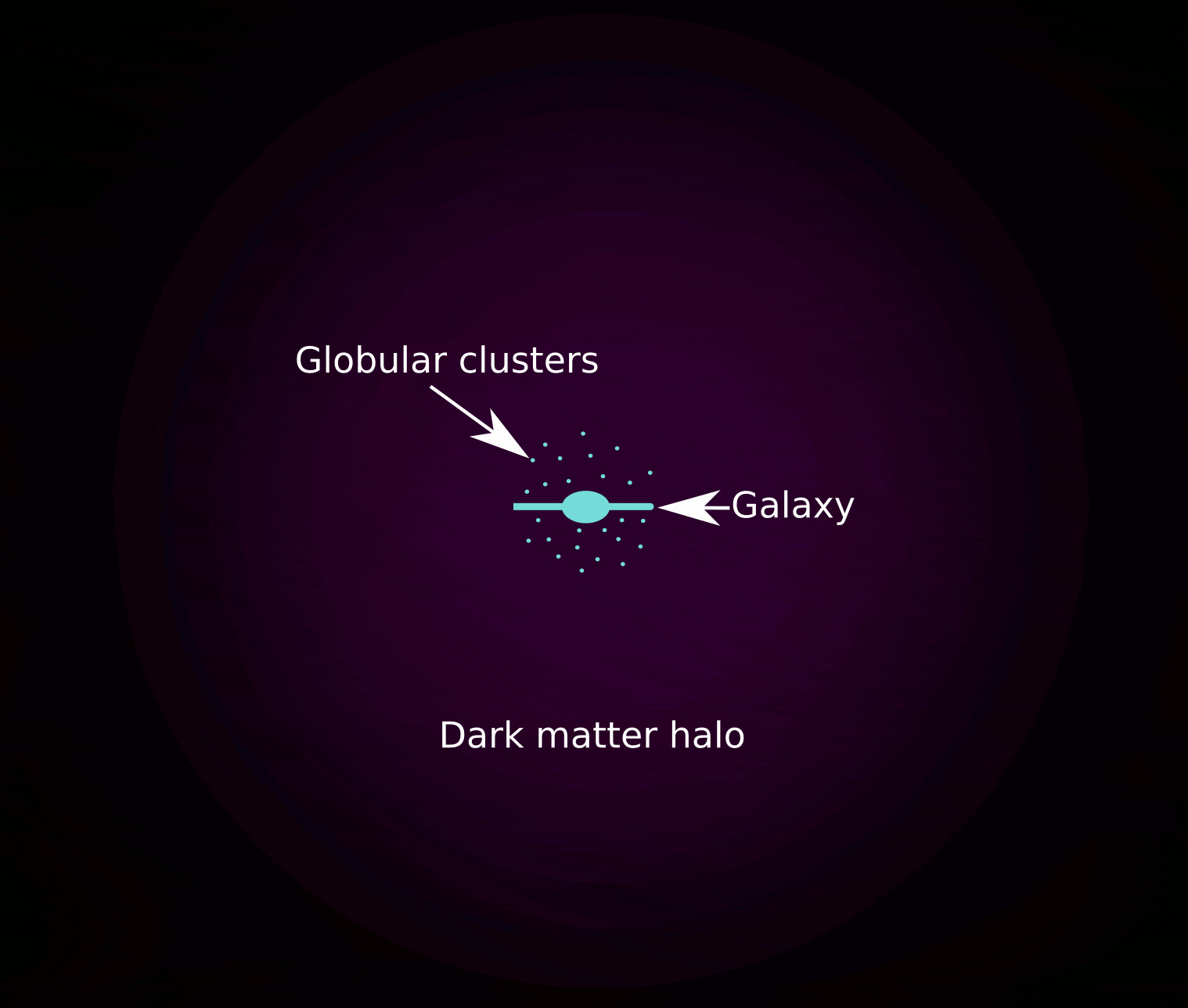
Introduction
With the discovery of gravitational waves by LIGO in 2015, we now have a new aspect of the universe to study and new questions to answer. One of those questions is what will eventually happen to objects bounded by gravity. Such objects include planets around stars, stars in galaxies, and dark matter particles in dark matter halos.
For a while now, we have predicted that gravitational waves would eventually make planetary orbits unstable. This will cause planets to collide with their stars. If there is another planet in the system, it could ejected them into space.
Now, a team of physicists led by Jianming Zhang have decided to study the long term effects of gravitational waves on dark matter halos. They find that like other objects in the universe, dark matter halos do not last forever. They would eventually collapse into black holes.
A summery of gravitational waves
Gravitational waves were first predicted in Einstein’s General theory of relativity. This theory allows us to understand the behavior and properties of gravitational waves.
According to the General theory of relativity, objects with mass bend space and time around them. When the object is accelerating, it’s bending of space and time causes changes that create ripples. These ripples are gravitational waves which travel at the speed of light. This is very similar to how accelerating electrically charged objects creates electromagnetic waves.
Massive objects in orbit create gravitational waves as they constantly accelerate towards the mass they orbit. These waves carry away energy from the object which causes them to gradually spiral inwards into smaller and faster orbits. This goes on until the object merges or collides with the mass it orbits. We see violent examples of this in the gravitational waves produced by merging black holes and neutron stars.
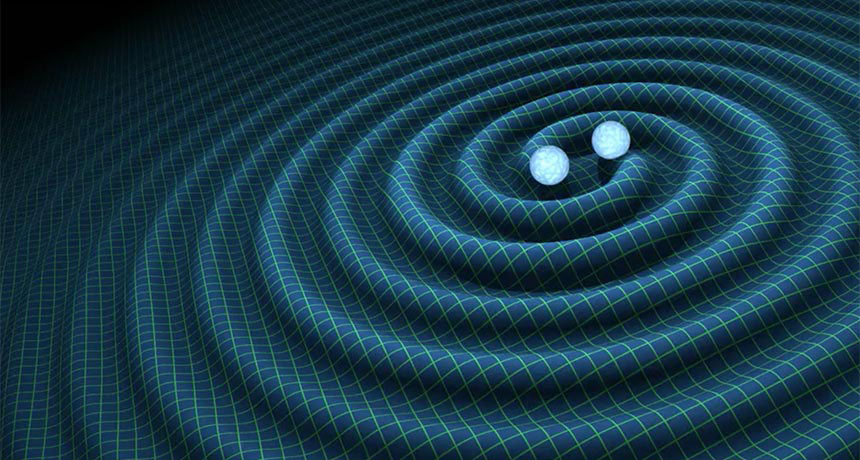
Unlike those black holes and neutron stars in the final moments of their merger, most objects in space experience only very small accelerations. Therefore, the effect gravitational waves have on them is insignificant. However as we shall see, this becomes a very different story when we look far into the future.
Heat death of the universe
As time passes, everything in our universe will eventually end up in a state of equilibrium. The universe will have no useable energy left. We know that this is most likely the fate of our universe as dark energy will cause our universe to expand forever.
Currently the universe has hydrogen gas to form new stars to replace the stars that die. Around 1014 years after the big bang, all the hydrogen gas will be used up. This means no new stars will form to replace the ones that died.
At that point, the universe will only have brown dwarfs (failed stars), black dwarfs (formerly white dwarfs), neutron stars, planets, and black holes. There will be no star performing nuclear fusion and shining. Collisions between brown dwarfs may create new red dwarfs from time to time but these too would eventually burn out.
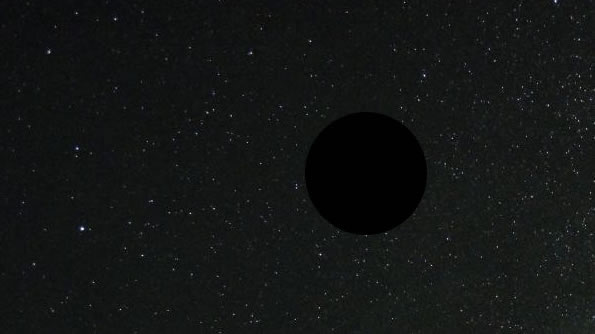
Gravitational waves and long time scales
During this time, small changes that were insignificant within the time span of the current age of the universe will have caused significant results.
For example, the interactions between stellar remains would cause galaxies to disintegrate and only leave behind their central supermassive black hole. This is because interactions between the stellar remains would eventually cause them to be flung into the central black hole or into intergalactic space.
Another example is that of planets. Due to gravitational waves, they will eventually spiral into what’s left of their stars. If there are more than two planets in a system, changes in their orbits could lead to close encounters. This may eject one of the planets out of the system into interstellar space.
As we shall see, that is not the only thing gravitational waves will affect.
Dark matter halos in the distant future
Zhang’s team found that even the dark matter halos surrounding galaxies and galaxy clusters are not safe from the ravages of time.
As far as we know, dark matter does not interact through any force other then gravity. There are hypotheses that say dark matter particles may interact with each other through a force other than gravity. But for this research, Zhang’s team ignores that possibility as currently, there is no solid evidence of it.
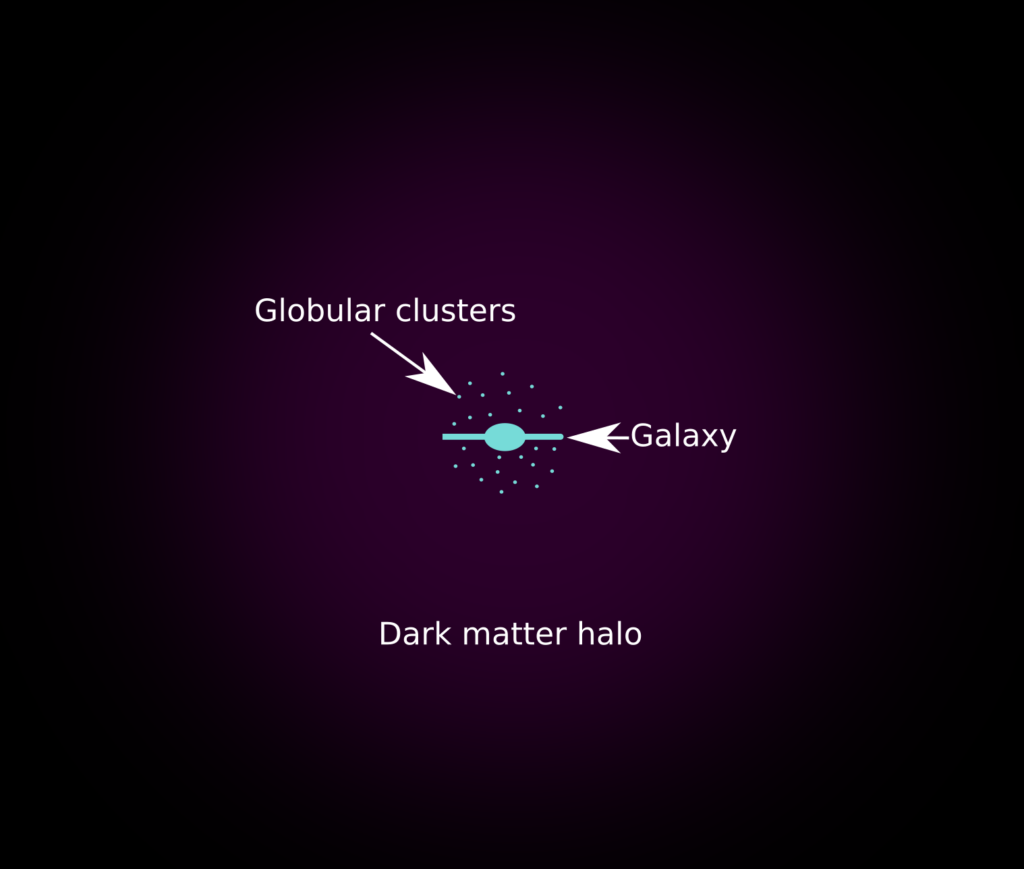
The dark matter particles in galactic halos are masses that are accelerated by gravitational fields. Therefore, they should produced tiny amounts of gravitational waves.
As stated previously, these gravitational waves carry away gravitational potential energy from the objects emitting them. Zhang’s team constructed simulations that explore the effects this would have on ark matter halos.
Gravitational waves and collapsing dark matter halos
In these simulations, Zhang’s team created a number of simplified dark matter halos. These simulations are based off two-body models. This may make the simulations look oversimplified. However, Zhang’s team argue that such simulations will produce results that are almost similar to ones with more than 2 objects.
The dark matter halos simulated by Zhang’s team have masses of 1.01 trillion, 10 trillion, and 100 trillion solar masses. Their sizes are also varied with radiuses of 860,000, 1.8 million, and 4 million light years.
What Zhang’s team found was that during most of the halos’ existence, changes are very small. The gravitational waves produced by the dark matter particles for the vast majority of the halo’s existence are very tiny. They only carry away tiny amounts of energy. This changes the particles’ orbits by tiny amounts that are barely noticeable.
Over extremely long periods of time however, these small changes cause the dark matter halos to shrink significantly becoming more compact and dense.
A quick ending
At the same time, the dark matter particles have entered smaller orbits and their orbital speeds have increased. This in turn creates stronger gravitational waves which increases the rate at which energy is removed from the system. The result is that things change at an exponentially faster rate.
Moments before the halo completely collapses, the dark matter particles orbit each other at incredible speeds within a very small volume of space. The same way two neutron stars or black holes rapidly orbit one another in extremely close orbits before they merge. In it’s final moments, the dark matter halo rapidly collapses into a massive black hole billions or trillions of times the mass of the sun.
Zhang’s team calculated that dark matter halos will take on the order of 1019 to 1025 years to collapse into black holes. According to Zhang’s team, this will be well into the time where a significant number of protons in the universe have decayed (if they are indeed unstable). However, it will still be a very long way before the first black holes start to evaporate.
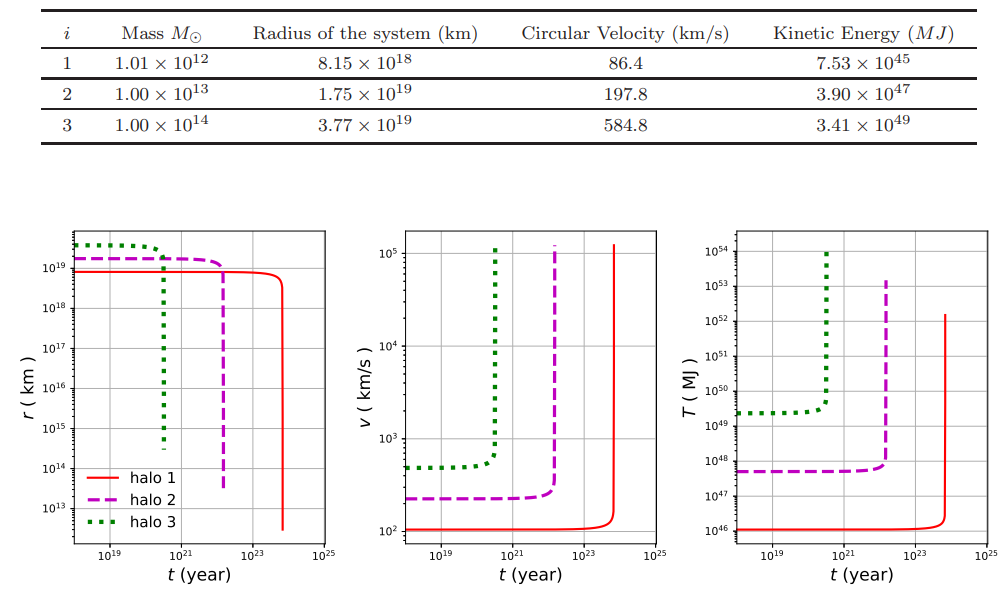
Caveats
Zhang and his team warns that such results are not fully certain as our understanding of dark matter is still very poor.
One possibility is that dark matter is self-interacting. In other words, dark matter particles actually interact with each other through forces other than gravity. This idea was proposed to explain dark matter distributions near the center of galaxies.
Self-interacting dark matter could collide with each other. This could make the simulations done by Zhang’s team inaccurate and the actual fate of dark matter halos could be very different.
Another possibility is that dark matter particles do not exist forever. Earlier studies have shown that if unstable, dark matter could decay on timescales similar to that of dark matter halo collapse. If this is the case, dark matter halos may end up evaporating away instead.
It is possible that other things could happen before the events simulated by Zhang’s team occur. It could be that the universe will experience a big rip or that a big bounce would happen.
Conclusion
The study of gravitational waves has given us new ways of studying the universe and predicting it’s future. But as mentioned, there are many things that we still do not know that may make such predictions inaccurate.
It could be that all dark matter halos would eventually collapse into black holes as suggested by Zhang’s team or they could meet a different end.
Over to you now. What do you think will happen to dark matter halos around galaxies and galactic clusters in the distant future?